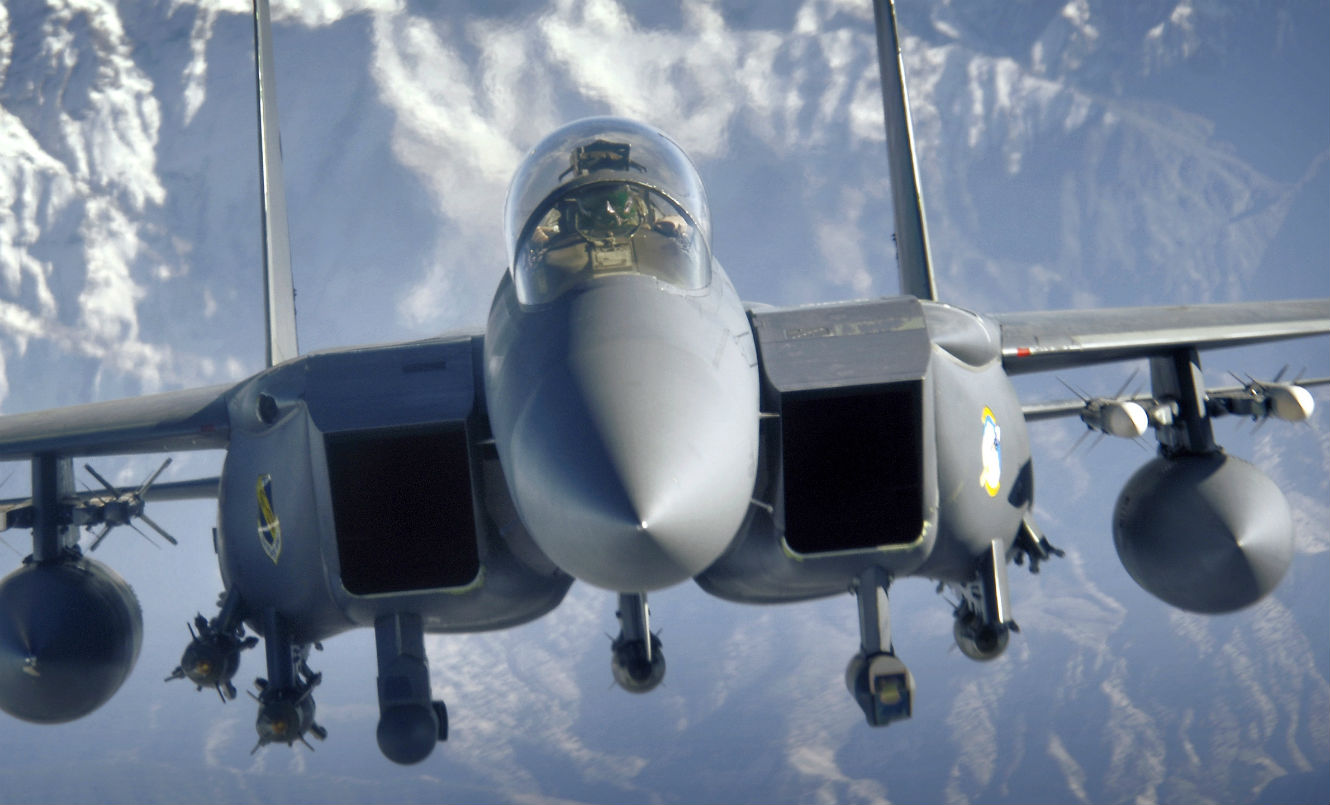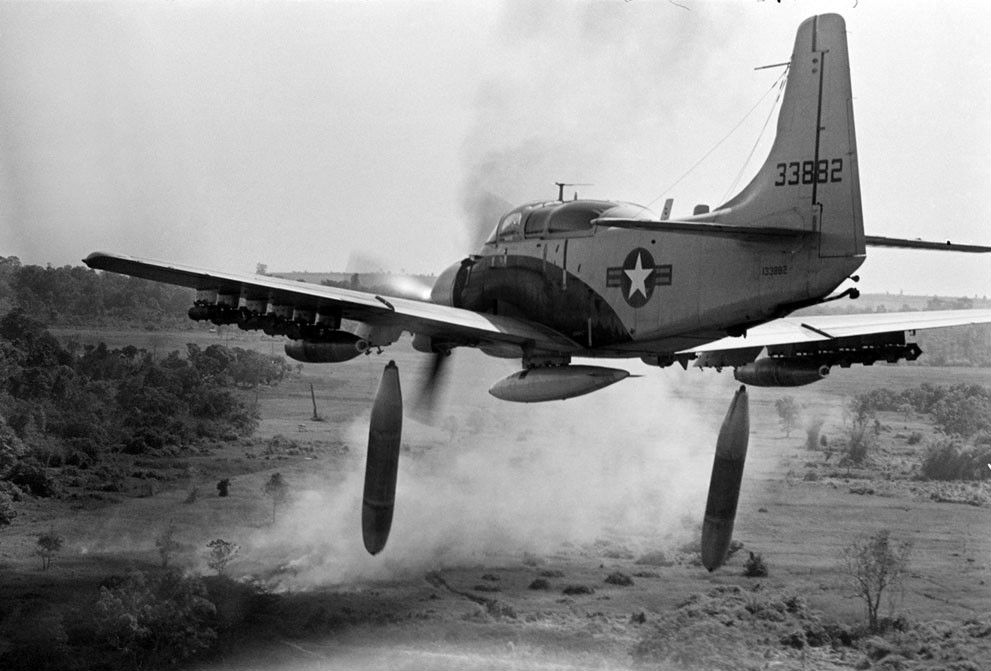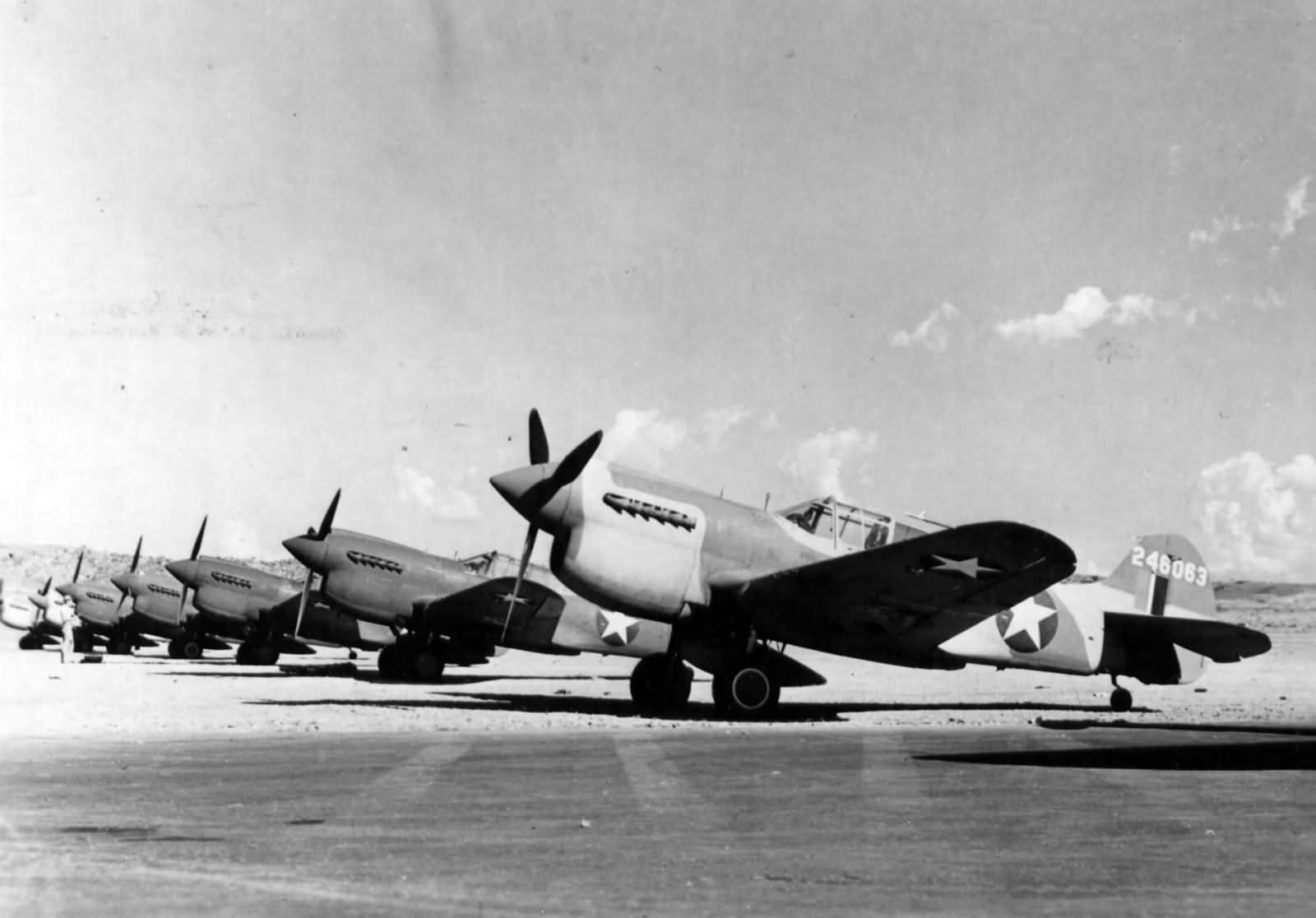MIKE PIETRUCHA
 In spite of the fact that close air support has shown that it is often one of the truly pivotal uses of air power in modern warfare, even now no other single issue seems more quickly to lead to outspoken disagreement between professionals charged with coordinating the air-land battle. Through the years, the nature of the prime questions has been both philosophical and practical: whether or not air forces have a duty to provide battlefield aid to land forces at the point of engagement, or whether air action might be more cost-effective through interdiction elsewhere, or in long-range strategic operations against the political, economic, and societal underpinnings of an enemy war effort. –Case Studies in the Development of Close Air Support, AFHSO, 1990
In spite of the fact that close air support has shown that it is often one of the truly pivotal uses of air power in modern warfare, even now no other single issue seems more quickly to lead to outspoken disagreement between professionals charged with coordinating the air-land battle. Through the years, the nature of the prime questions has been both philosophical and practical: whether or not air forces have a duty to provide battlefield aid to land forces at the point of engagement, or whether air action might be more cost-effective through interdiction elsewhere, or in long-range strategic operations against the political, economic, and societal underpinnings of an enemy war effort. –Case Studies in the Development of Close Air Support, AFHSO, 1990
The Air Force gets a bad rap on close air support (CAS). There is no shortage of articles, blog entries, and transcripts stating as a fact that the Air Force has “no interest in CAS.” The argument over the A-10 became forever mired in the discussions over CAS, as if it is the only aircraft that accomplishes the mission and as if CAS is the only mission that matters. Lost in the turmoil are the facts: The Air Force has consistently dedicated more sorties to CAS than to any other mission over the last 20 years. The service’s dedication to CAS has resulted in upgrades to training, aircraft, sensors, communications, and weapons far in excess of similar upgrades for any other mission. Fighter / attack aircrew have more experience in this mission type than in any other. That’s an awful lot of effort put on a mission that the Air Force allegedly doesn’t care about. So, if the Air Force has no interest in CAS, why is it flying so damned much of it? The answer is obvious. The Air Force cares a great deal about CAS.
 Close sometimes means close. An A-1 Skyraider drops napalm on a VC position, 26 December 1964 (AP / Horst Faas)
Close sometimes means close. An A-1 Skyraider drops napalm on a VC position, 26 December 1964 (AP / Horst Faas)
Make no mistake about it, the Air Force and Naval aviation fly a lot of close air support. Not only have we been flying around 20,000 CAS sorties per year for more than a decade (assembled from US Air Forces Central Command data), but this number dwarfs the sortie count for all other combat missions combined. That makes a great deal of sense. Operations in Iraq and Afghanistan have largely been in support of irregular warfare operations, where there is no real need for counterair, defense suppression, or strategic attack missions. Between 2006 and July of 2015, the Air Force and Naval Aviation flew well over a quarter million CAS sorties over Iraq and Afghanistan – not counting sorties against ISIL. The impact of this has been severe. The Air Force’s fighter enterprise is as close to broken as it has ever been, a result of expending the force to provide support to U.S. forces in harm’s way.
I can cite statistics until I turn blue and it won’t matter one bit, because this is not an intellectual issue, it’s an emotional one. No matter how many CAS sorties the Air Force flies in support of the ground component, it will never be enough. And from a point of view centered on the tactical edge, it isn’t. Airmen should take this as a compliment, because it is a practical recognition that not only does airpower deliver an edge in the tactical fight, it provides a decisive advantage. But from the perspective of an individual taking fire in a remote village in Afghanistan, that air support is needed right here and right now. The generals can bloody well wait – fixed targets like bridges, airfields, and command bunkers aren’t going anywhere, and they aren’t killing anybody. And therein lies the fundamental challenge of CAS: When it’s needed, it’s needed badly and in a hurry, or somebody’s going to die. Airpower is not unique in that respect. It is true for all supporting fires.
Just What is CAS Anyway?
Close air support (CAS) is air action by fixed-wing and rotary-wing aircraft against hostile targets that are in close proximity to friendly forces and requires detailed integration of each air mission with the fire and movement of those forces.
Department of Defense Joint Publication 3-09.3
In common parlance, exactly what constitutes CAS has become badly muddled. The definition is clear enough, but a large number of missions that are described as “CAS” are nothing of the sort because of a lack of friendly troops, detailed integration, or both. In Operation Allied Force over the former Yugoslavia, a large number of “CAS” sorties were tasked over Kosovo, despite the fact that not a single NATO or partnered soldier was on the ground needing support. The number of U.S. troops on the ground in Syria today is miniscule and our allied forces do not have the “detailed integration” capability of US and NATO forces, yet the majority of sorties there are described as CAS. The term is used sloppily to cover an array of missions from armed reconnaissance to what used to be called battlefield air interdiction – preventing second-echelon forces from moving on and to the battlefield. As the definition has become muddled, it has become harder to attribute how much weight of effort has been placed on traditional CAS and defined in joint doctrine. “CAS” has become a catch-all for counter-land missions against fielded enemy forces.
The Army and CAS
“Maxim 36: When the going gets tough, the tough call for close air support.” – Howard Tayler, The Seventy Maxims of Maximally Effective Mercenaries
The fundamental disagreement between services is not over the utility of CAS, but over the priority of CAS. Ground commanders charged with directing the tactical fight have an insatiable and understandable appetite for airpower support. U.S. Army officers, in particular, appear to be very uncomfortable with the give-and-take of joint planning efforts and would prefer to be able to direct airpower like they did in 1942. This preference manifested itself in Operation Anaconda in Afghanistan, where the Air Force initially provided little air support because none had been asked for. The problem with the 1942 North Africa model, where Army commanders directed the employment of air as if it were the equivalent of infantry or armor, is that it did not work. Airpower was divided up, limited in employment, and rendered impotent precisely because it was used in an inappropriate manner – trying to keep an air umbrella over U.S. troops at the expense of all other missions – including support of Allied ground forces not belonging to the U.S. Army. When the Army was allowed to direct airpower, U.S. forces were getting their butts kicked.
At the end of 1942, we had tried to use airpower the Army way and it failed. It took a command reorganization by Gen. Eisenhower and command directives by Air Vice Marshal Sir Arthur Coningham, commanding tactical air forces in North Africa under American Lieutenant General Carl Spaatz, to straighten things out:
The Soldier commands the land forces, the Airman commands the air forces, both commanders work together and operate their respective forces in accordance with the combined Army-Air plan, the whole operation being directed by the Army Commander.
In the case of North Africa, the priorities for combat airpower were air superiority, interdiction, and ground support, in that order. This concept was accepted by Allied commanders and provided the fundamental grounding that would underpin Air Force doctrine. And it worked through the remainder of World War II, Korea, Vietnam, and until today.
It was the U.S. Army that invented the AirLand Battle Doctrine and sold it to the other services – recognizing that the Warsaw Pact Armies could not be defeated at the point of contact regardless of how much friendly air was available and enemy air wasn’t. To fight the Warsaw Pact was going to require a deep battle. CAS was necessary, but interdiction was intended to prevent Soviet and Warsaw Pact forces from ever making it to the front line – and starve forces that were already there of critical supplies. Battlefield air interdiction (BAI) was added to the lexicon, describing interdiction efforts aimed specifically at fast-moving second-echelon forces. The construct worked well in Operation Desert Storm against Iraqi forces and consumed significant effort. And while we have lost BAI as a means for accounting sorties, the concept remains intact.
Getting Real on CAS
“The lack of determined Iraqi resistance during the round offensive made close air support by aircraft a peripheral aspect of this war. All the frontline Iraqi divisions crumbled quickly, often with no resistance at all, and as the corps advanced they reported only light resistance throughout the theater.” -Gulf War Airpower Survey Summary
In Desert Storm, the air component largely bore the brunt of the campaign effort against Iraq, paving the way for the 100-hour ground war that was necessary if Iraqi forces were to be compelled to leave Kuwait. The first three phases of the campaign plan were air-only, followed by the final phase that involved coalition ground forces. Over the course of the entire war, Iraqi ground forces received regular attention – 66.8 percent of the sorties flown were targeted against Iraqi ground forces. This was more than 8 times the volume allocated to the next largest category, which was airfields. Attacks on ground forces began on the first night and continued throughout the first three phases, reaching a peak before the ground war commenced. On the first day of the ground war, fully a third of A-10 sorties dropped no bombs and more Marine Harriers returned with their weapons than without them. In the Gulf War, the close air support battle had largely been won before it was fought, whittling down Iraqi forces to the point where organic Marine and Army firepower could handle the threat.
There is no evidence behind the assertion that the USAF is not interested in Close Air Support, and a great deal of evidence to the contrary. It is ludicrous to assert that there is a critical aspect of airpower that the Air Force is not interested in, whether it is CAS or any other airpower application. Airpower is what Airmen deliver. Such an assertion meets the needs of program advocates intending to support one program over another but it is neither true nor does it advance the debate. Air Force does a lot of CAS and has severely stressed the fighter / attack force proving that it is damned good at it. Since May, Air Force leadership has been open about exploring not one but two attack aircraft (OA-X and A-X2) that will conduct close air support – among the other counter-land missions that we expect from fighter and attack aircraft. Airpower is a resource that must be used wisely and appropriately. There are not enough aviation resources (nor will there ever be) to provide all of the CAS that the ground forces at the sharp edge would prefer.
Airpower delivers. And while the Air Force does not focus its entire warfighting effort on close air support, that approach has been proven not to work. Airpower delivered in the Gulf War, again in Enduring Freedom, yet again in Iraqi Freedom, and today, daily, in Inherent Resolve. The Gulf War was airpower-heavy, and it was a victory. Inherent Resolve is also airpower-heavy, and has delivered measurable effects without the need for the wholesale involvement of U.S. ground forces. The measure of airpower is not how many CAS sorties we fly with what aircraft – it is how airpower is applied at the campaign level by individuals who understand how to use it.
Col. Mike “Starbaby” Pietrucha was an instructor electronic warfare officer in the F-4G Wild Weasel and the F-15E Strike Eagle, amassing 156 combat missions over Iraq and the Former Republic of Yugoslavia and taking part in 2.5 SAM kills over 10 combat deployments. As an irregular warfare operations officer, Colonel Pietrucha has two additional combat deployments in the company of U.S. Army infantry, combat engineer, and military police units in Iraq and Afghanistan. The views expressed are those of the author and do not necessarily reflect the official policy or position of the Department of the Air Force or the U.S. government.

No comments:
Post a Comment